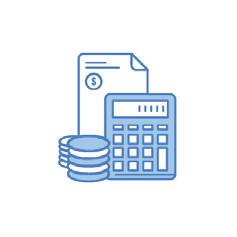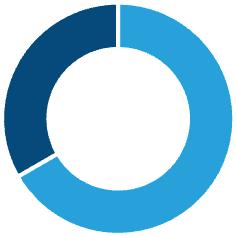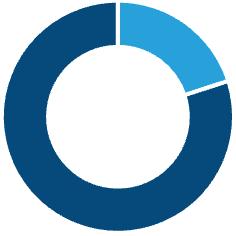

Navigating Asset Management Challenges for Remote Workers in the Post-COVID Era.
Unlock the potential of your hybrid workforce and minimize the risk profile of your business.




Unlock the potential of your hybrid workforce and minimize the risk profile of your business.

Beyond the challenges and opportunities brought forth by the COVID-19 pandemic, its’ most enduring effect will be the permanent adjustment to the way we work.
On one hand, employees now enjoy greater freedom to work remotely, organizations are able to lower their corporate real estate overheads, and employers are able to access global candidate markets.
On the other, organizations had to contend with the reality of establishing the infrastructure to empower their workforce to mirror in-office productivity and collaboration.
This presented several challenges, including performance monitoring, maintaining cybersecurity in a degraded IT environment, and fostering teamwork among a decentralized workforce.

Among these concerns was, and continues to be, onboarding of remote workers – including the logistics of transporting (and retrieving) high-value company assets to new hires.
The
sudden and unprecedented switch to work-from-home arrangements compounded
an
issue
that
had until this time remained under the radar –the financial, compliance, reputational, and cybersecurity risks associated with IT asset loss or theft by remote workers.
The sudden and unprecedented switch to work-fromhome arrangements compounded an issue that had until this time remained under the radar – the financial, compliance, reputational, and cybersecurity risks associated with IT asset loss or theft by remote workers.
While most employees can be entrusted to do the right thing, the sheer scale of the shift towards hybrid working arrangements means this previously minor issue is now a tangible concern for many organizations.
Deeply embedded within the Asia-Pacific IT Asset Management ecosystem, Drake Business Services Asia conducted an in-depth investigation into this industrywide problem to quantify just how far-reaching the issue is, and what can be done to address it.

Although brought into prominence through necessity by the pandemic, remote work is not a new phenomenon and has been extensively studied for it’s resultant impact on IT asset management.
While the existing body of research focuses mainly on the impact of lost or stolen items, unrecoverable assets from terminated remote workers has been a longstanding concern.
The Ponemon Institute (a global leader in data protection and information security policy) conducts an annual benchmark of the effects of lost and stolen IT assets on US organizations.
Collectively, the 329 organization surveyed in 2022 lost over 100,000 devices. While only a small proportion of these losses were due to willful theft on the part of former employees, this study highlights the significant impact such losses have on employers.
The institute estimated that the average cost to a business for a lost or stolen laptop could exceed USD$50,000 – a staggering figure given the nominal cost of the asset itself.







To illustrate the magnitude of the problem within a specific industry, one study revealed that 94% of healthcare organizations experienced at least one data breach in the past two years.
In almost half of the cases (46%), the source of the breach was a lost or stolen device.
Beyond business disruption and loss of confidential information, significant fines may be levied, such as the $1,040,000 fine imposed on Lifespan Health System for a breach originating from a stolen device.
Adding to the complexity is a lack of visibility from the IT Asset Management (ITAM) function in many organizations. For remote working arrangements to be successful, organizations must be able to accurately track each asset throughout its entire lifecycle.
Unfortunately, many organizations lack the necessary visibility across their IT environment to effectively manage a large-scale work-from-home (WFH) setup.
Enterprise Strategy Group recently investigated this issue, finding that three quarters of US-based respondents did not have a complete inventory of user devices.

94%
Of Healthcare organizations suffered at least one data breach in the past two years 46%
Of these data breaches originated from a lost or stolen device.
$1,040,000
Fine levied on a healthcare provider for a data breach from a stolen device.
We chose the Philippines as our research base for a number of reasons, including:-
z The Philippines is among the worlds’ largest outsourcing markets, representing a cross-section of the global economy.
z The cost of stolen laptops in the Philippines is comparatively higher when considering other HRM costs.
z Locating assets from former employees is a greater challenge than elsewhere in the world.
z The Philippines embraced working from home arrangements at the outset of the pandemic.
z Challenges in shifting to hybrid work were exacerbated by infrastructure and policy shortcomings that were less apparent in more affluent countries.
z Logistics infrastructure in the Philippines is comparatively less developed, presenting a unique challenge in transporting assets to end users.
A major limitation in the current body of work is its focus on the impact of IT asset loss without malicious intent on the part of the employee.
This includes assets accidentally misplaced in airports or other public places, or stolen by thieves.
A second category of asset loss, while less prominent, is becoming an increasingly challenging issue for organizations that have switched to hybrid working arrangements. This category involves theft by employees who fail to return company-supplied assets at the conclusion of their employment.
To address this knowledge gap, Drake Business Services Asia interviewed over one hundred organizations in the Philippines to better understand the challenges surrounding the rapid switch to hybrid working arrangements and it’s resulting impact on IT asset logistics.
We engaged in open dialogue with each participant to understand how they initially adapted to hybrid work, their long term strategy, and their logistical challenges in transporting and retrieving high-value assets from remote workers. Finally, we sought to understand the financial and operational repercussions unreturned assets were having on their business.


62%

21%

77%
Of respondents had permanently shifted to hybrid working arrangements.
Reported experiencing at least one instance of highvalue IT asset theft from a remote employee.
Reported experiencing ‘significant’ logistical challenges transporting or retrieving assets from their remote workforce.
Our survey revealed that 20% of organizations in the Philippines encountered at least one instance of being unable to retrieve a valuable IT asset such as a laptop from a departing employee during the past twelve months.
Several reasons were cited for this issue, including:
z Lack of response from the employee despite attempts to get in touch across multiple channels.
z The employee’s refusal to surrender the asset, even after repeated requests.
z The employee’s failure to inform their employer about a change in address.
z The employee being situated in a remote area of the Philippines, causing logistical challenges.
As noted earlier, research indicates the average cost to a business for failing to recover an IT asset, such as a laptop, is approximately $50,000 USD, with the cost of the asset itself only a minor component.
Adjusting for lower wages in the Philippines we estimate the equivalent local cost to be around $7,800 USD
With a total of 1,175 unrecoverable devices reported by respondents, this equates to an average cost of $507,000 USD per affected organization.
Average financial impact to affected organizations

In addition to the financial consequences of an unrecovered asset, many respondents noted the follow-on effect of being unable to equip new starters with assets intended to be re-allocated from former employees.
We very recently experienced 4 AWOL agents who didn’t return their laptops.
It was hard to reach out to them, and they were unresponsive on social media.
These assets were intended for our new starters, affecting our ability to on-board new staff.
The shift to remote work required us to equip our employees with the necessary tools, such as laptops, monitors, and peripherals, to enable them to perform their roles effectively from home.
Retrieving these assets poses a logistical challenge, especially when employees have become accustomed to using them in their remote work setups.
Coordinating the return of equipment from various locations and ensuring that it is done efficiently can be a complex process, particularly if employees are geographically dispersed.

A number of respondents noted the significant logistical challenge in supplying a geographically dispersed workforce, noting the cost and complexity of the process.
We issued 1,700 of our staff with laptops and peripherals. At one point we had 50% unreturned assets. We had an initiative to contact these employees, including continuous follow ups.
If we don’t hear back within eighteen days we will issue a legal case.
We also advised that we will not process their final pay, but still didn’t receive a response. We just don’t have time to focus on all these follow ups.
A common theme was the significant time investment needed to continually follow up on each unreturned asset.
The need to micromanage this process was a major source of distraction for the client’s internal functions, greatly affecting their ability to focus on more pressing concerns.

We believe the solution lies in a combination of passive and reactive measures – ensuring your business is equipped to prevent issues from occurring, and swiftly addressing them should they arise.
A robust IT Asset Management System (ITAM), will ensure the accurate categorization and integration of each IT asset used within your operations.

Additionally, an ITAM allows for the tracking of all asset movements, providing you with precise information regarding the location, timing, and recipient of each asset.
Hybrid working environments require robust cybersecurity practices to prevent data breaches.
Encrypted hard drives, multi-factor authentication and remote monitoring software should be considered the minimum standard for all remote workers.
Ensure assets can be remotely and immediately disabled, and that software is cloud-based where possible to prevent client-side data storage of confidential information.
Many organizations face challenges when redistributing devices from former to newly hired employees, contributing to operational bottlenecks.
While stockpiling expensive IT assets is not a feasible solution, alternative approaches to consider include maintaining a reserve of deprecated (but compliant) devices, implementing a Bring Your Own Device (BYOD) policy, having short-term asset rental arrangements available, or looking into virtual-desktop arrangements.

Establishing strong partnerships with qualified, reliable logistics providers is crucial to seamless asset delivery and collection.
Your chosen partner should have a deep understanding of your organization’s logistics requirements, proficiency in handling high-value IT assets, a proven record of meeting Key Performance Indicators (KPIs), and possess the capability to service all required geographical areas.
Ensure that employees are aware of their rights and responsibilities concerning the handling of company IT assets. Clearly communicate what is expected of them when returning these assets to the company at the conclusion of their employment.
During the reference checking process, take the opportunity to directly inquire about the candidate’s performance as a remote employee and whether they returned all company assets at the end of their employment.

It is essential to familiarize your organization with the legal boundaries surrounding withholding of pay or similar cost recovery measures. Such actions may be illegal in many regions, even if included as a clause in their employment agreement.
Understand when and how legal action can be pursued, to prevent your organization incurring excessive legal costs.
5. Developing an Efficient Asset Recovery Plan for Departed Employees

By implementing a comprehensive asset recovery process, organizations can streamline the process of recovering company property from departed employees efficiently and effectively.
Ensure you have accurate information on the employee, including their current address and contact information to facilitate the asset collection process.
Implement a communication plan to inform departing employees of their responsibilities regarding asset return and the potential consequences for non-compliance.
On the employee’s final day, remotely disable any assets assigned to them to prevent unauthorized usage, safeguard company information, and prevent a potential data breach.
Offer departing employees a prepaid parcel box to facilitate the return of assets. This removes potential barriers or inconveniences that may hinder the process.
If an employee shows reluctance to return the asset, collaborate with a trusted logistics partner. They will act on your behalf, engaging with the employee to negotiate a time to retrieve the asset.
In cases where previous efforts prove unsuccessful, explore available options for taking legal action to recover the assets. Seek professional advice to understand the applicable legal processes and potential remedies.

Drake Business Services Asia is a leading managed services provider, offering complete outsourced management of non-core support functions to deliver measurable cost reductions and efficiency improvements.
Working alongside our global partners in six countries across the Asia-Pacific region, we empower our clients to focus on their core business, reassured that their support services are in the hands of an industry expert.
Understanding the challenges presented in this white paper, we’ve developed a comprehensive end-to-end solution for asset distribution and recovery – ensuring your team is equipped with the tools they need and reducing the financial impact of unrecoverable assets.
Our portfolio delivers operational, compliance, and financial improvements to your business, all while freeing your team to focus on what they do best.
z Enhanced Visibility of Your Inventory
Ensuring every movement of each asset in your inventory is closely tracked.
z Reduced Financial Impact of Asset Theft
We take accountability for retrieving high value assets from former employees.
z A Fully Scalable Service Model
Any individual service from our portfolio can be integrated into your business.
z Empower Your Remote Workforce
Ensure your remote team is equipped with the equipment to perform at their best.
Inventory Management
Providing the staff, systems, and infrastructure to manage your IT assets, including tagging, access requirements, and database management.
Asset Transport
Combining in-house and external messengers to provide specialized, secure transport of IT assets between your inventory and remote workforce.
Asset Recovery
Specialist recovery services to reduce the impact of IT asset theft on your business and ease the offboarding process.

Address
9th Floor 837 A. Arnaiz Avenue
Makati City, Philippines 1200
Jossan Yumang
Business Development Manager
jyumang@ph.dbsa.asia 0917 305 0866
Rosalyn Zapanta
Operations Manager (Warehouse & Transport) 0918 944 8256
rzapanta@ph.dbsa.asia
Dr. Krees Castaneda
Country Director 0920 903 7601
kcastaneda@ph.dbsa.asia